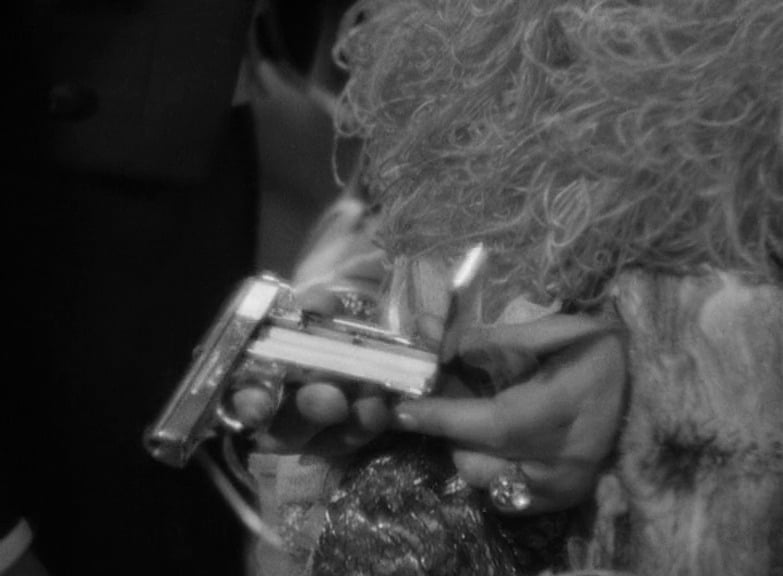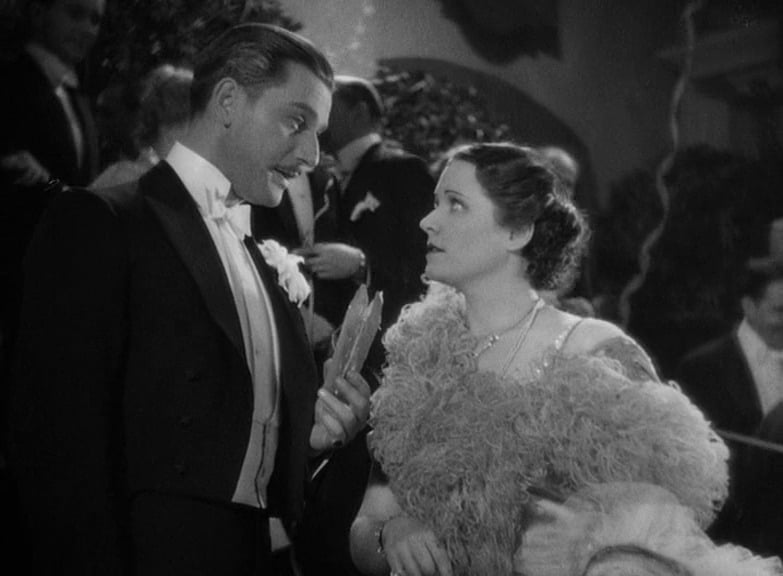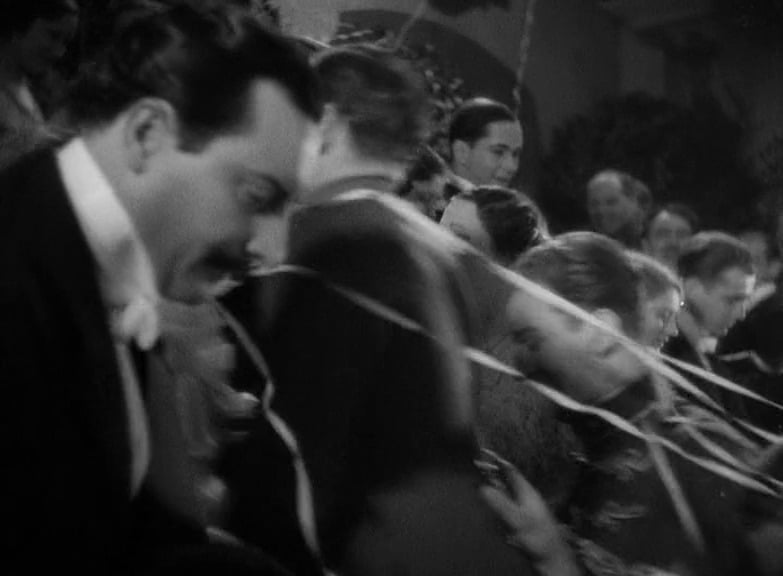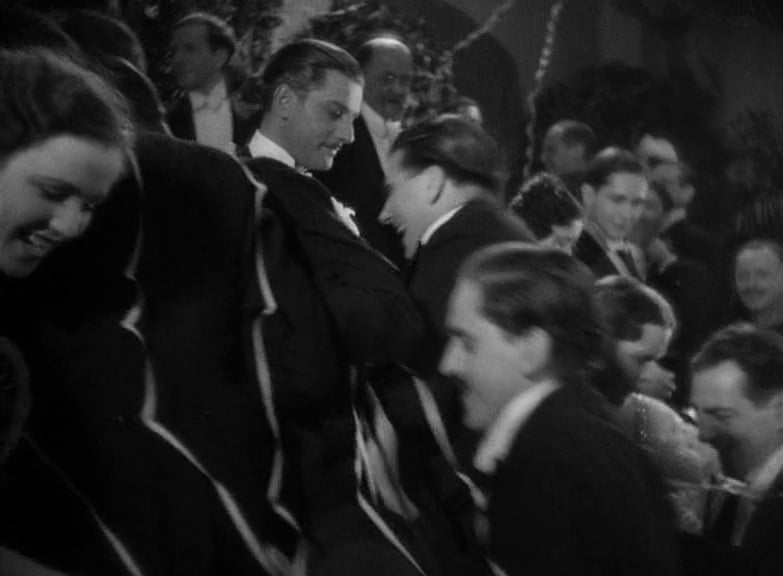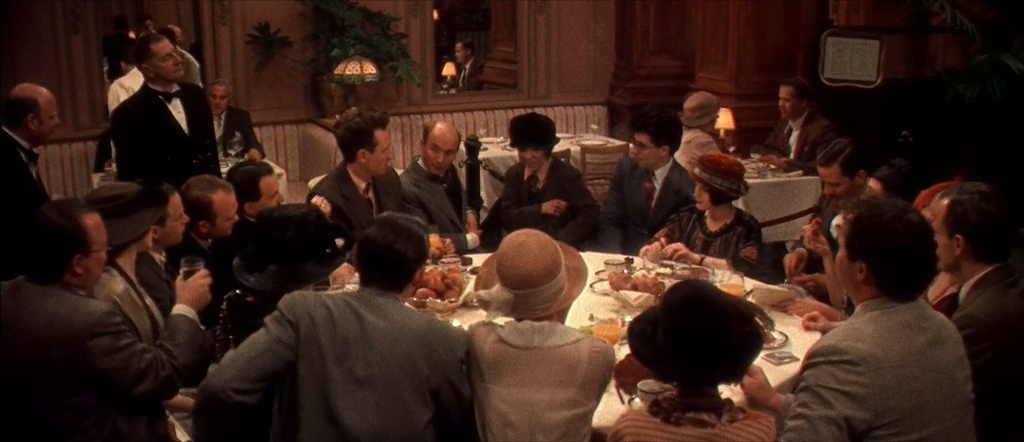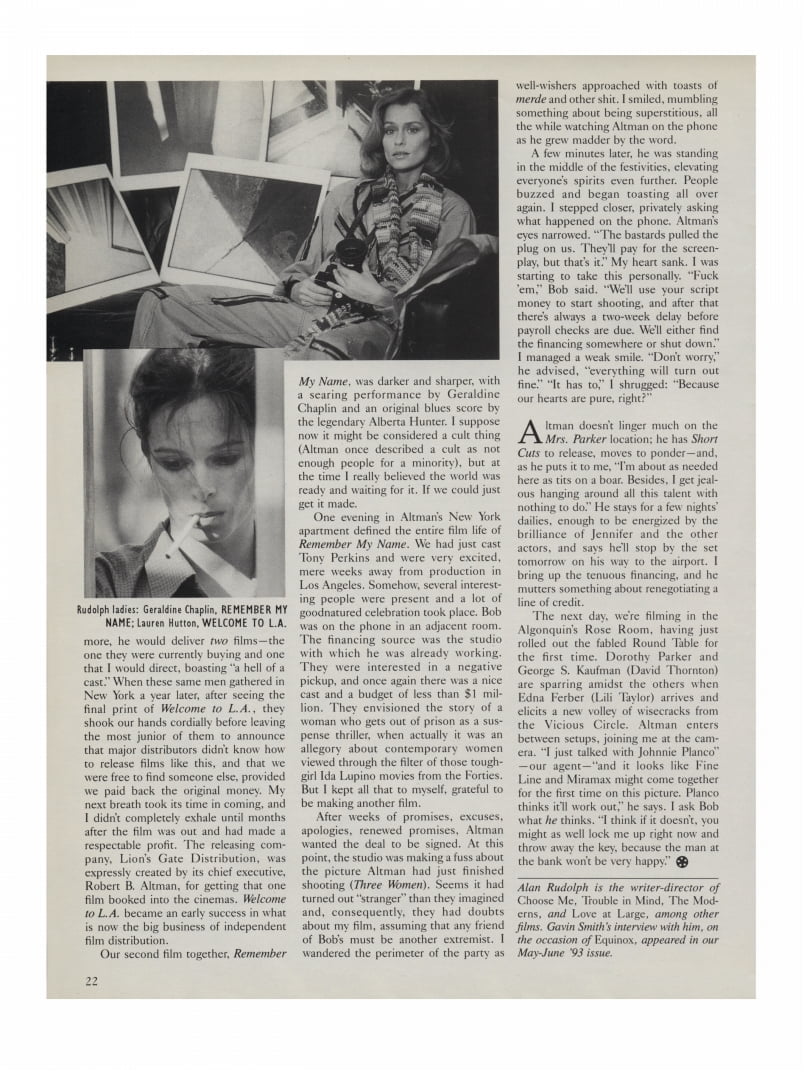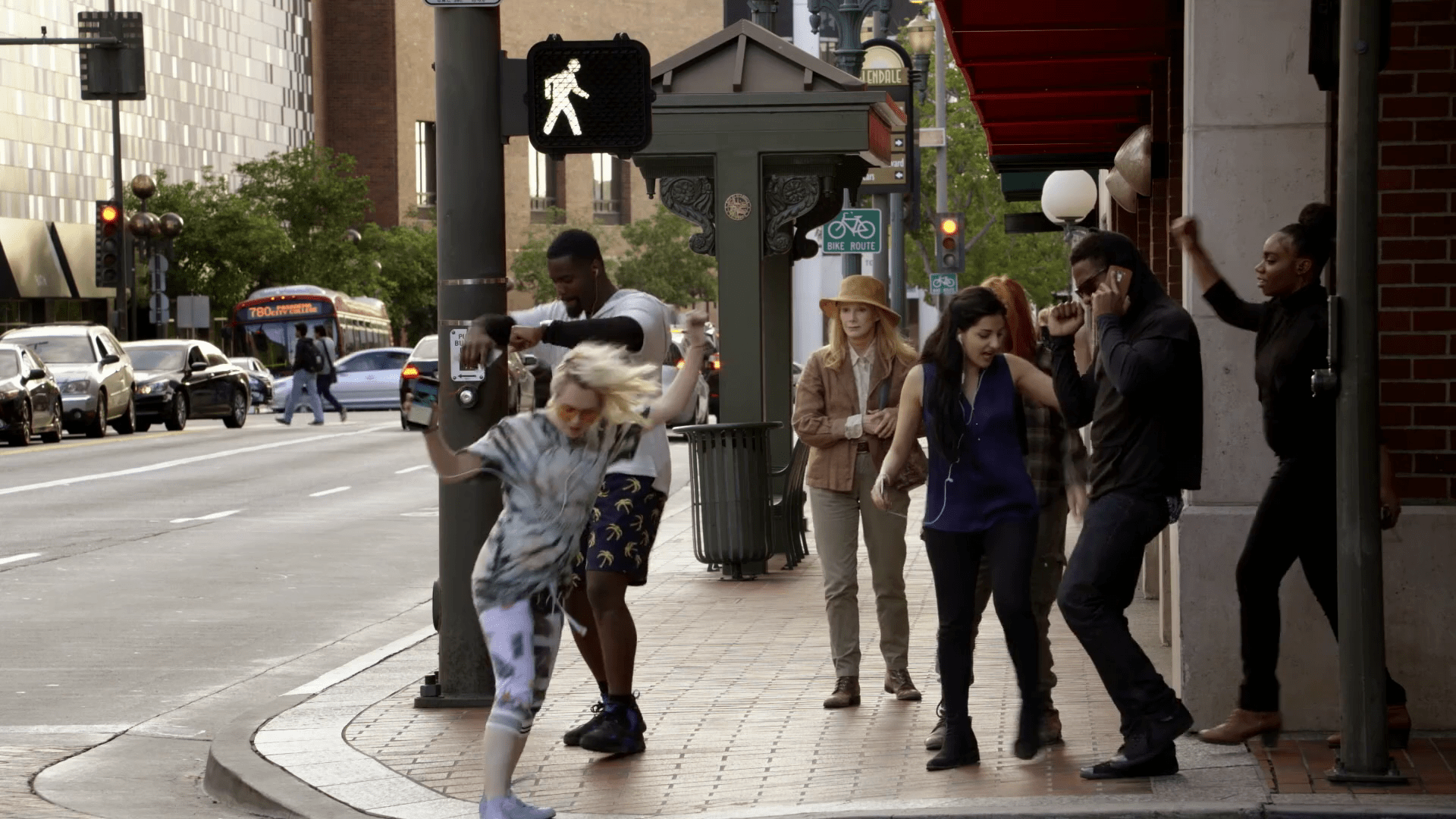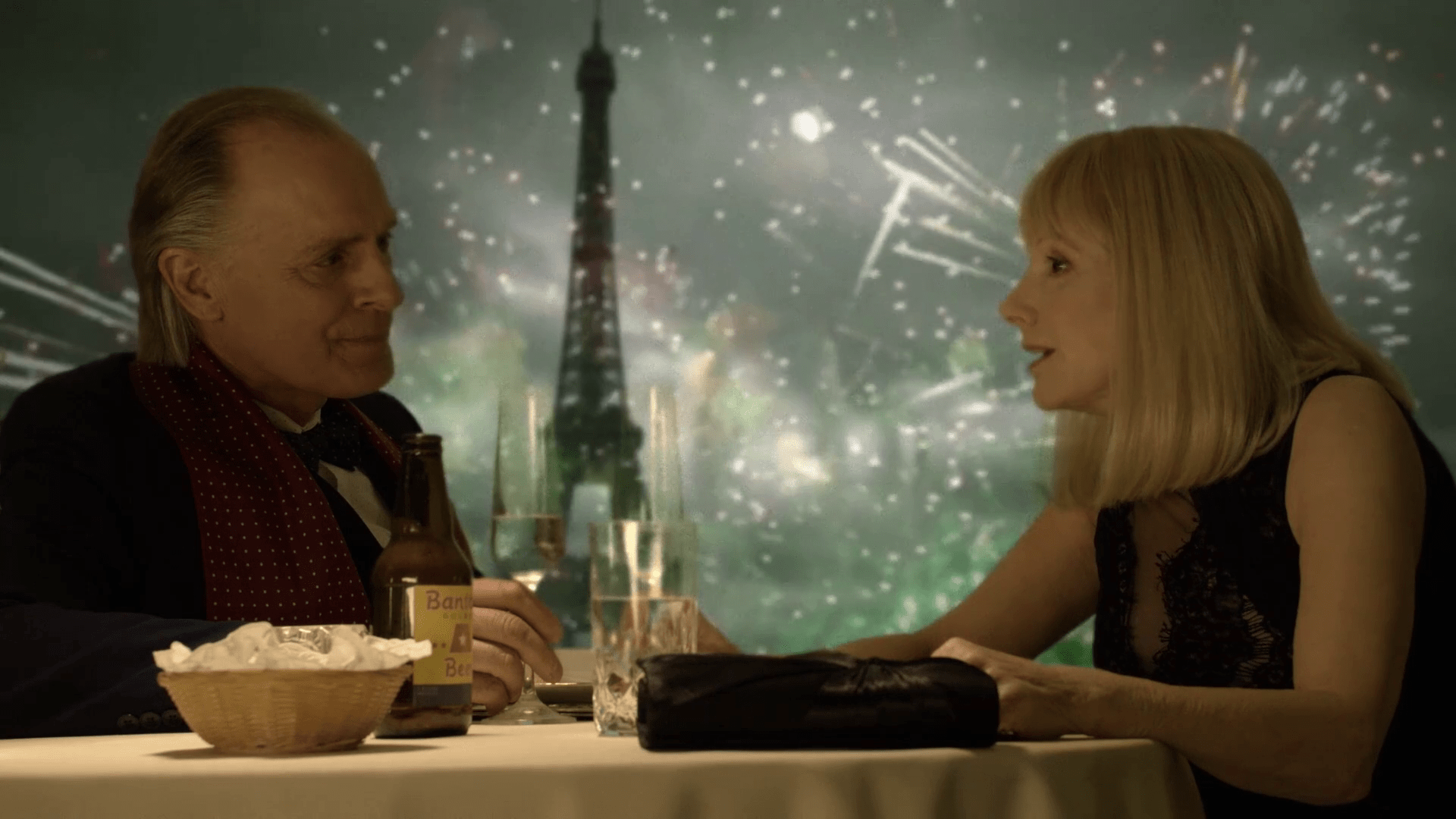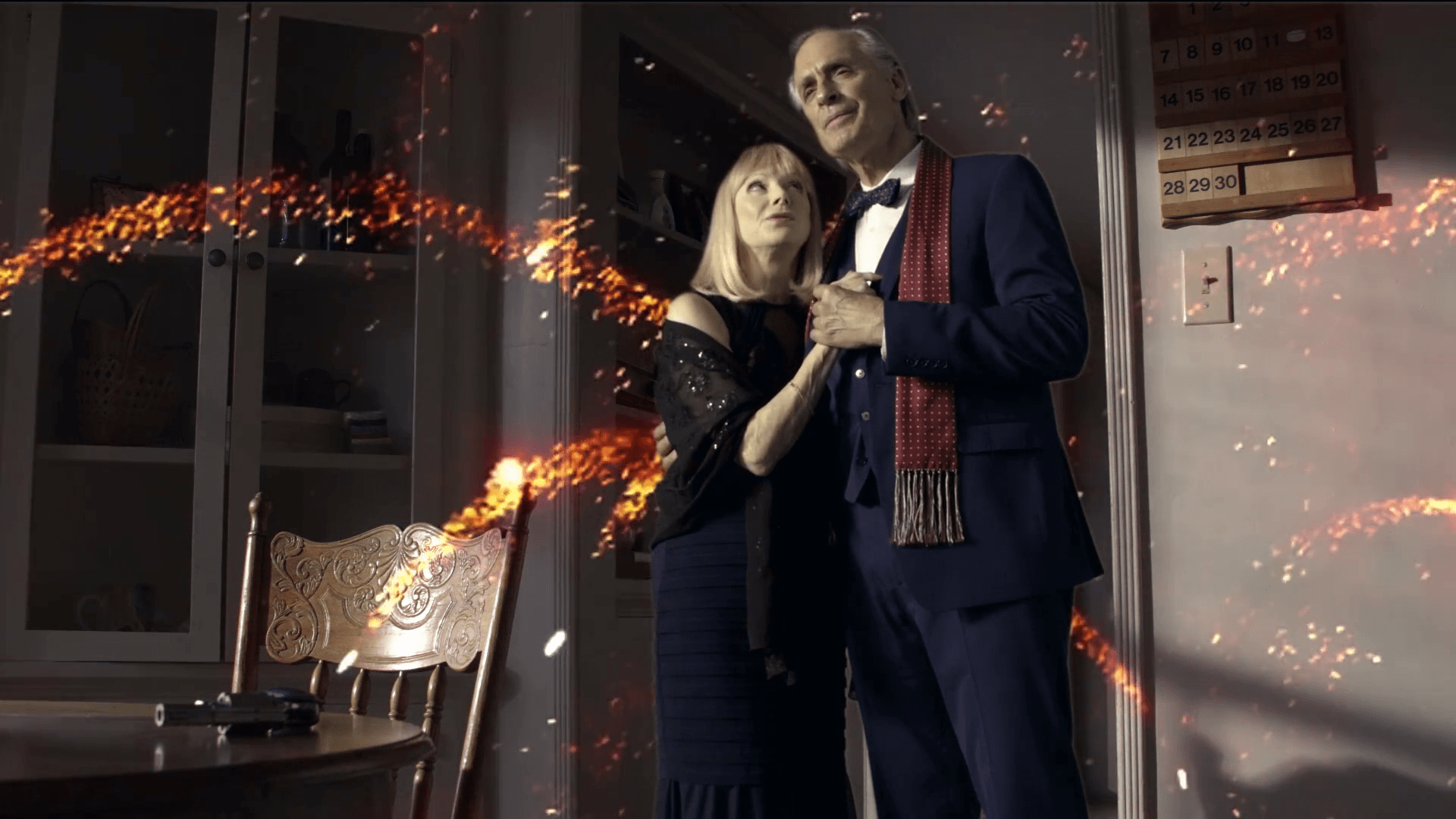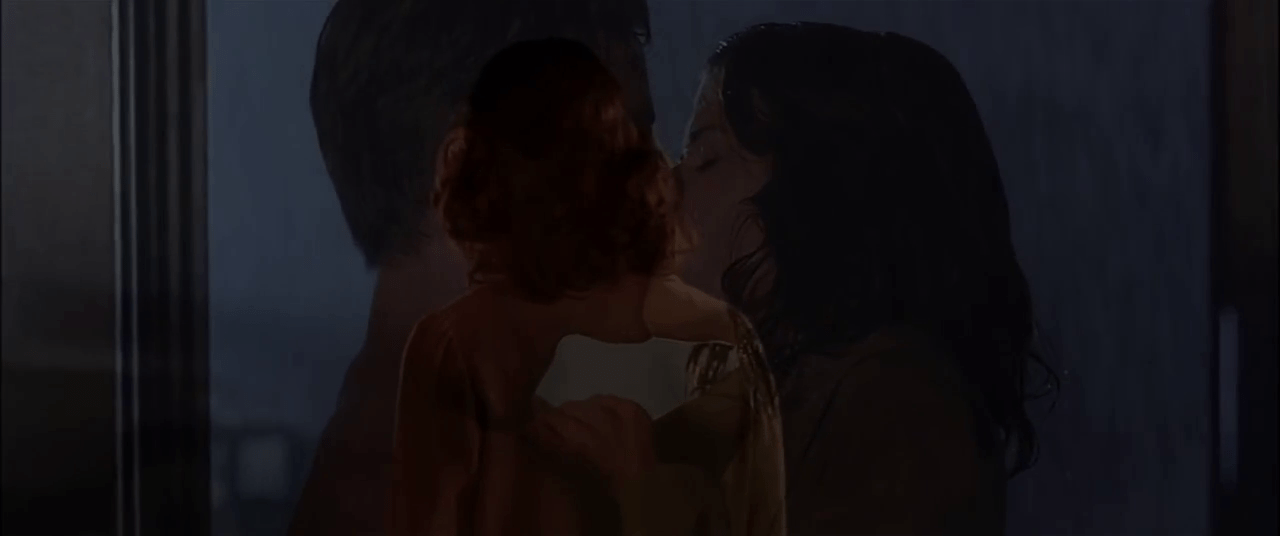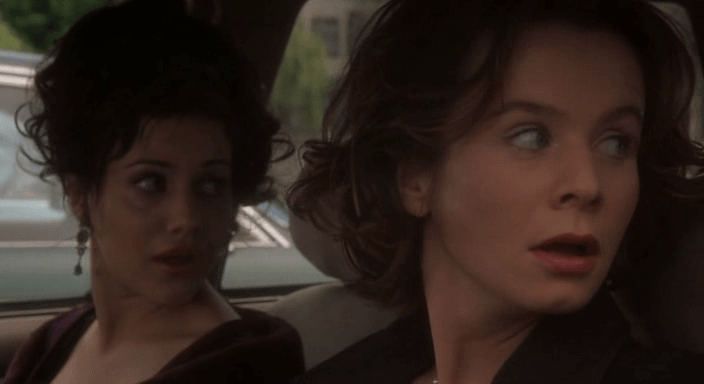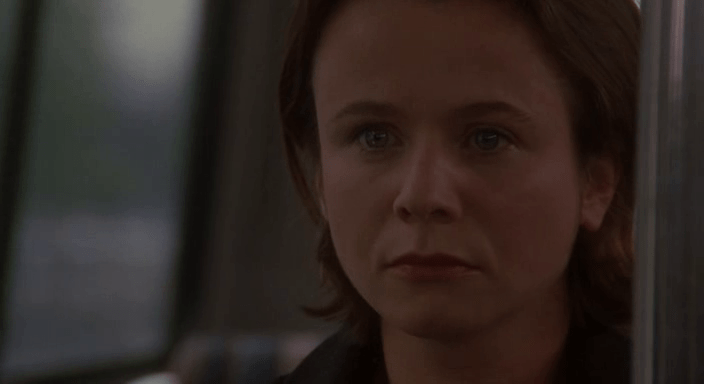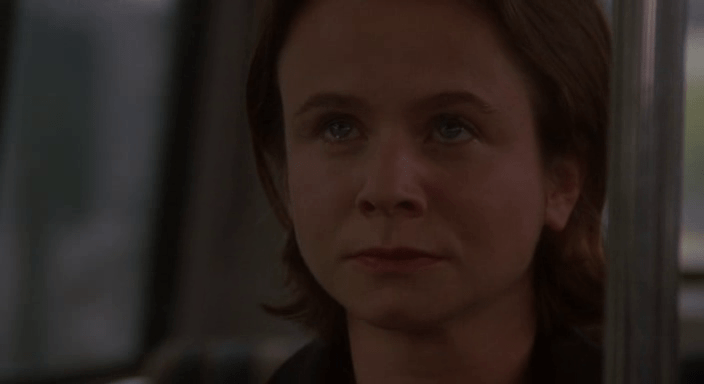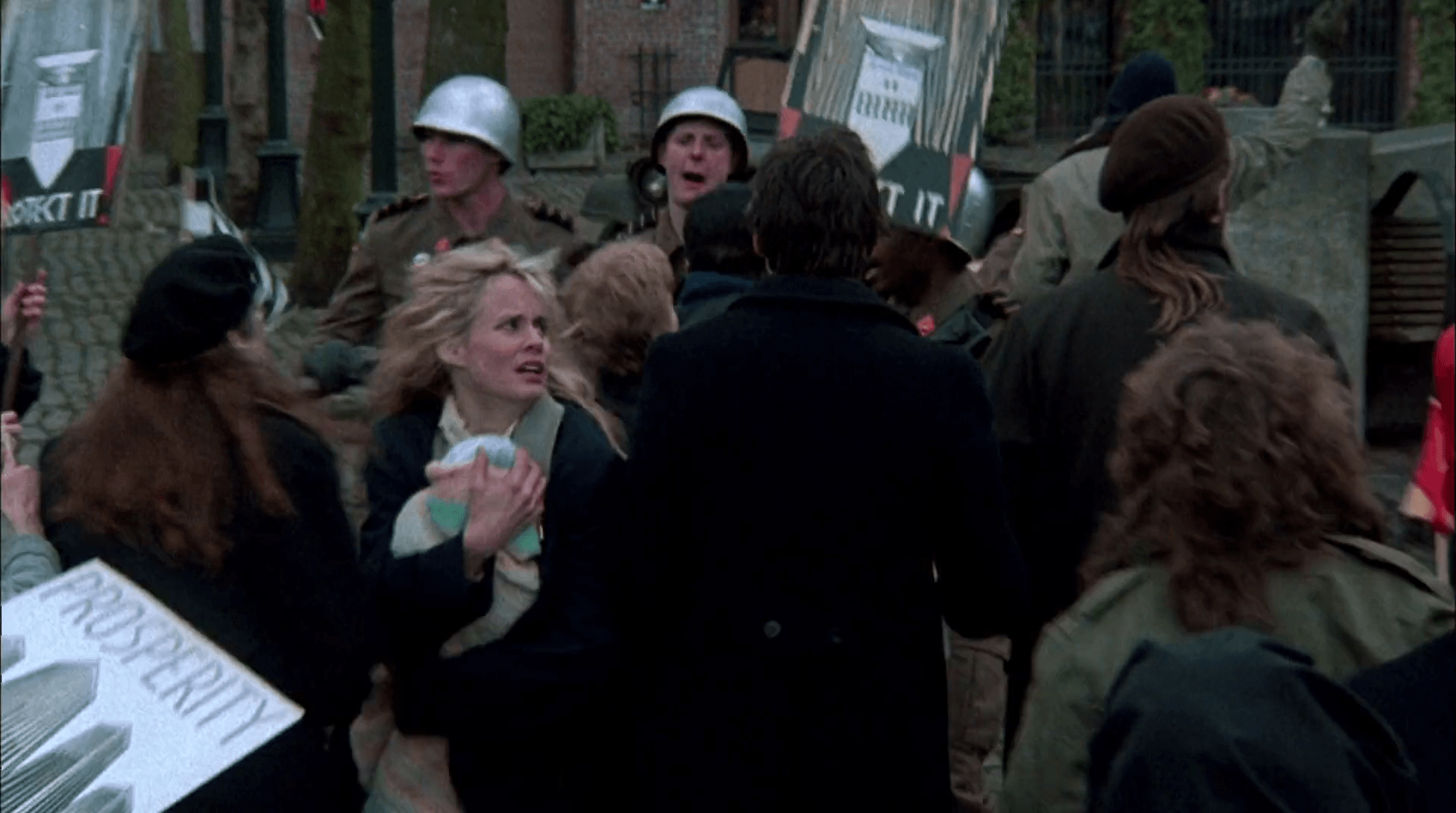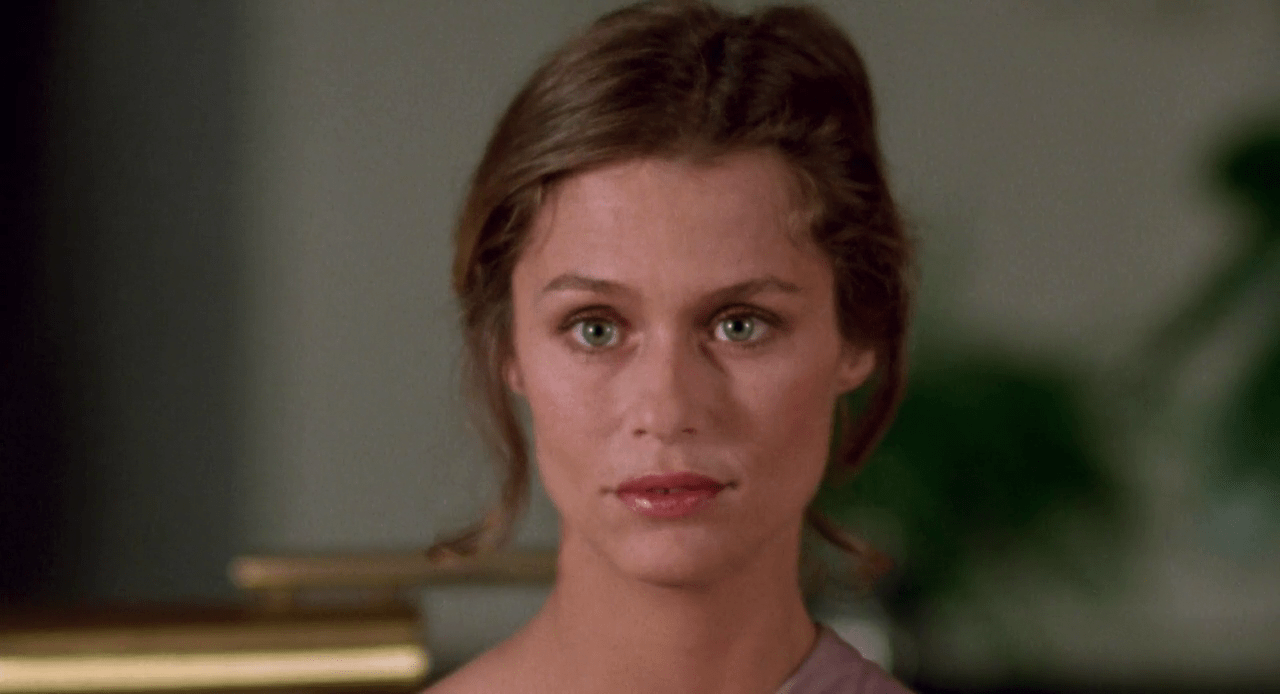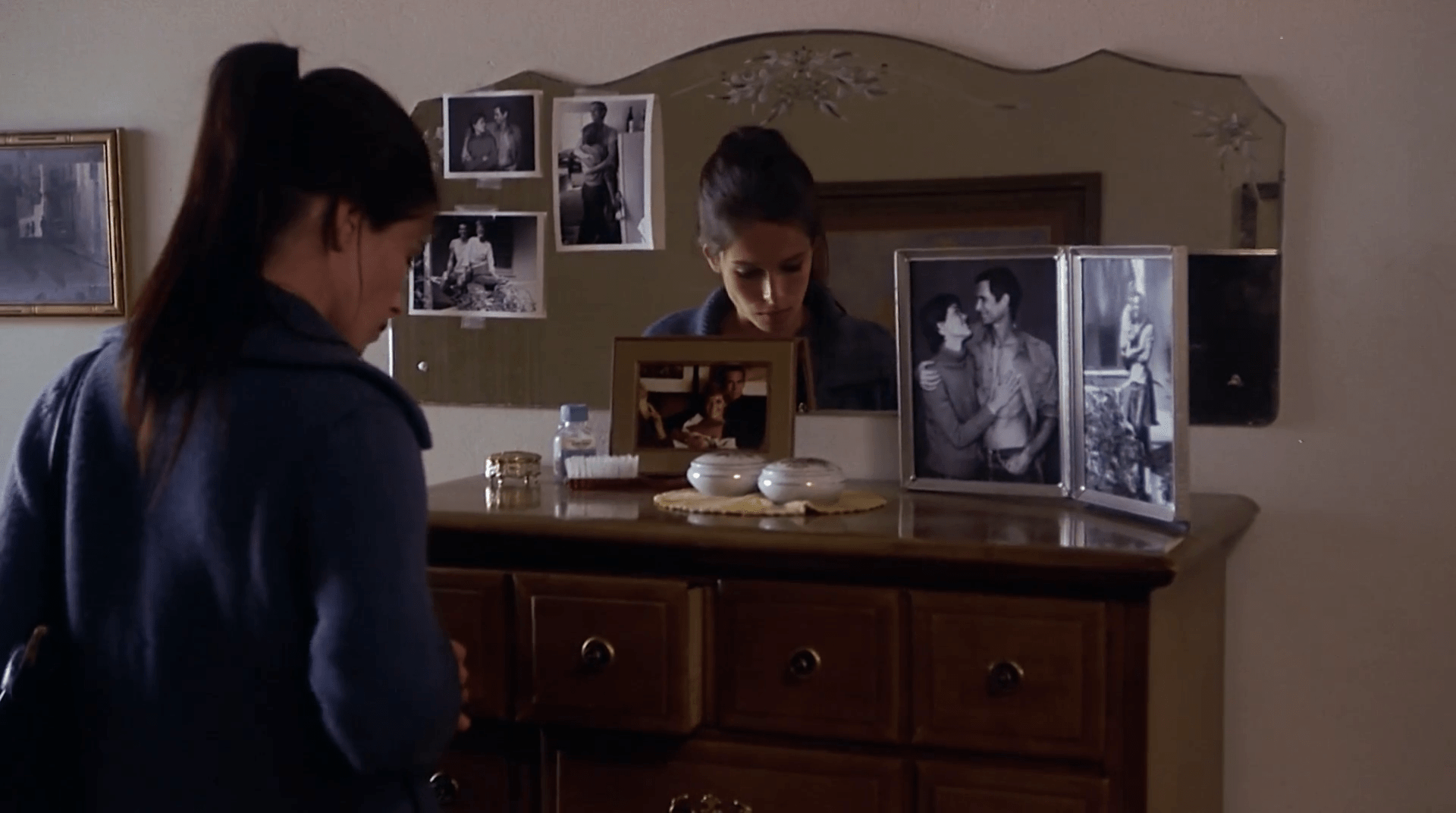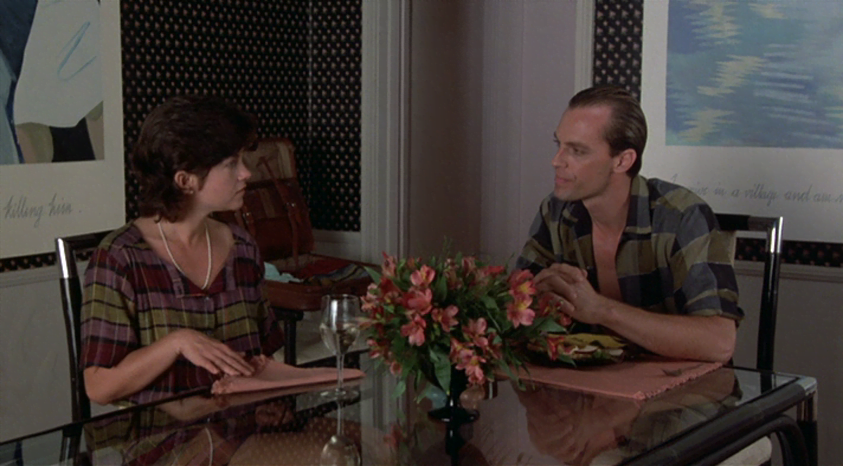INTERVIEW – ALAN RUDOLPH
ESPECIAL ALAN RUDOLPH
Los filmes de Alan Rudolph; por Dan Sallitt
Trouble in Mind (1985); por Dave Kehr
Trixie (2000)
Investigating Sex [Intimate Affairs] (2001)
Ray Meets Helen (2017)
El productor como apostador; por Alan Rudolph
Interview – Alan Rudolph
Entrevista – Alan Rudolph
For this interview we sent to Alan Rudolph a bunch of long questions. We were immensely curious and felt that we owed the man a debt, because his work means so much to us. When we received the answers, Mr. Rudolph, once again, did it his way. And it was wonderful. Here is an exact transcription of his reply. Our only modification was the italics to the names in the films, in order to follow the tradition of our magazine. At the end you will find our original questions.
ALAN RUDOLPH’S ANSWER
Mucho gusto.
I read your record of my relatively obscure film life. Curious how facts suggest a map was involved.
I’m afraid if I answered all your specific questions as asked it would take me almost as long as living them. The answers are my life. I’ll just riff on the following summary questions and you can sort it out.
Motivations that set you on path to cinema. The place where your personal vision comes from. The vision that drove your energy when you began, and still boosts your desire to make films. How have you dealt with financing, production, shooting films. How have you obtained creative control of them. How does it relate to intertwining with other people’s scripts. Relation between experienced and inexperienced collaborators. Joyce? what have learned through altman movies as a spectator and worker? Characteristics that separate you from altman? in which way, consciously or not, do golden years of Hollywood permeate your work? what is it about the twenties? why did script collaborations come about on three 20s movies? Music? How work with Isham? Dailies? Ray Meets Helen. Distillation? Digital vs film? Was film a recap? After Secret Lives, why the lull? Painting? Future?
Film perspective is my reality. I am incapable of interpreting life any other way. It’s my language, mental process, point of view, endeavor. I have no choice.
Movies have been inside my life’s bubble since childhood. At theatres, the dinner table, visiting Dad on dark muted sound stages. He took us to “foreign” films and American noir before that description existed. Other kids didn’t care about Asphalt Jungle, Ealing Studios, La Strada, Monsieur Hulot. I was being transformed for the rest of my life.
Being under a film’s spell is what got me. The otherworldly feel. Heightened atmospherics, stylized language, elusive emotions, strange reasoning. Visual manipulation. That secret connection. It’s not real, but feels true. That’s what I’ve been chasing. Contrivance that reveals some truth.
My path to directing was unorthodox. Not that a standard exists. Assistant directors are in control of shooting sets. Big job but dead-end creatively. I learned the craft of moviemaking from veteran Hollywood crews. I sought the art of filmmaking on my own. Exponentially with Altman.
Most of my films are absurdist fables. Romances with little or no reference to contemporary realities or trends – except dryly. They are humorous and serious simultaneously, as if the joke might be valid. They appeal to movie sensibilities, not movie rules. Golden Age (your description) types speak stylized dialogue, but behave unpredictably with emotional dimension. My films involve personal and societal irrationalities and deceptions. They embrace artifice, mystery, wordplay. They laugh at themselves. They are not always what they seem. A love story or detective farce might also be an allegory for corporate and political greed – because I couldn’t get the corporate and political greed project going. Maybe The Moderns, set firmly Paris 1926, is about its own trials in Hollywood. Ray Meets Helen could be a metaphor for a filmmaker chasing a film he loves only to pay the ultimate price upon reaching his dream. Or not.
I hoped I could communicate with American audiences on a frequency other than what they were used to. But their first questions were usually, “Where does this take place? Is it supposed to be real? Is this funny or serious?” Sometimes my work plays better on the way home after seeing it. Or twenty years later. My films have always been like my blood type – not for everyone.
Creative control is an attitude, state of mind. I got “mine” at the outset via Altman. Not that he said anything about final cut and all that. Bob simply assumed that like him I would want to shoot and edit my film my way – that is after I learned how to use editing equipment because Welcome to L.A. had no full-time editor. Discoveries were possible, answers to questions never asked. I learned about my own visual rhythms, vocabulary. If creative control means all that, I ain’t giving it up.
Economic budgets have always played a pivotal role in my methodology. I’d much rather have made a film for too little than almost have made one for more. Altman produced Welcome to L.A. and Remember My Name to expand his company and present a new voice. The films were well-cast, mini-budgeted, stealthily-made, studio-financed. Those same studios rejected and returned them upon first viewing. We had to distribute both ourselves as American art house films, a category that didn’t exist then.
Until around 1990, to stay afloat while making my own films at little or no pay, I accepted some directing gigs. A few came my way as impossible disasters in a hurry to start shooting. My specialty. I knew if I delivered the goods the studios would keep their distance until we finished. I was either saving their asses or would be the perfect target for blame. I just wanted to make good work from bad circumstances. For the most part I think I did. Immediately after each job I started work on my own scripts. As Solo says in Trouble in Mind, “One thing – leads to another.”
Actors and crews tell me I work differently than most directors. I have no idea what that means. Other than I don’t make choices based on commerce. My sets are friendly, organized, controlled but spontaneous. Discovery, epiphany, good surprises always welcome. No shot lists or story boards. Actors, the most important element in any film, are protected and valued and they respond with their art. A written scene evolves during each take, sometimes wildly so. I am usually first to suggest variations. On Welcome to L.A. during a difficult scene, I kept encouraging dialogue changes. After several frustrating attempts we reverted to the script as written and printed take one. There is no formula. Long takes are common with me, dialogue delivered in natural rhythms, camera, lens, actors all moving. The human face, the best place to find meaning, is often the ending of a shot.
Key positions on many of my movies are filled with crew moving up to their dream jobs for little pay. I usually see something in a person that can be elevated. Creative standards don’t change with budget or scale. The personality or skill of a crew decides the daily routine but not the overall goal. Enthusiasm can’t replace experience, but is sometimes more useful. Especially when trying to do what is not done. Something about ignorance and bliss. Careers of producers, cinematographers, editors, production designers, even notable actors have begun on my sets. To do quality work is a powerful motivator. The more you sense someone and they you, the more you anticipate, channel, intuit. The memories of any experience may evaporate, but they’re indelible on screen. Film is a living magical powerful entity. What goes on in front of the lens must be safeguarded. What it takes to get there must be…life? I often say to editors about the next cut, “The future of Earth depends on it.”
Working with Joyce is pure delight. I wish we could have done every film together but she was always in great demand and usually busy. She is not only the love of my life and a truly gifted still photographer, but also a calming source of friendly happy energy for cast and crew. Her small frame and quiet manner allow her to squeeze into compact places resulting in great angles and vivid photos, many recalling classic vintage Hollywood photographers. After Shortcuts, Altman told me she was his most valuable crew member. Not only because of her great work but her shooting set spirit.
Robert Altman was the most influential American filmmaker of his generation, on and off screen. His attitude and artistry, his innovation and rebellion basically reassembled American film perception and production. And audiences. I was fortunate enough to be part of his world before American Independent was a label. For over thirty years we were friends and colleagues. He was forward thinking, behaving, creating. Hollywood refused to officially embrace Bob but they couldn’t let him go. He was mentally and physically an imposing creator who made his art his way by his rules with his band of misfits. Contemporary filmmaking was never the same after him. American audiences and attitudes had to adjust to Altman, not the other way around. Current filmmakers who may never have seen his work are influenced by its impact. Bob never formally taught anyone anything. He just was and everyone learned a lot. I know I did.
I hadn’t seen an Altman film before spending time with him in person, an indelible experience on its own. My reaction to his work will forever have him personally attached. Which makes it even more rewarding and incomparable. I purposely structured Welcome to L.A. to acknowledge Bob’s influence on me. By then whatever part of me was to be altered by Altman had already begun its process. For films and life. We were very different in most ways, but overlapped too. In fact, we were as unalike as our films. And as similar.
I have made three films set completely or partly in the 1920s. That period seemed a turning point for global behavior and cultural innovation for the next hundred years – and counting. Paris was where the art of it came together. The good, the bad, the lovely.
The Moderns was my first attempt at a serious screenplay, written twenty years before it was ultimately made. Jon Bradshaw, celebrated journalist husband of Carolyn Pfeiffer, started nagging me to do a rewrite with him. He liked my characters and dialogue but wanted to strengthen the story because mine “had all that dream crap.” We worked together over many months and then spent the next 10 years trying to get it made – to no avail. We decided the least we could do to stay connected to our subject was regularly overindulge in the the bars, cafes, cheap restaurants of Paris, New York, Los Angeles whenever our paths crossed. Which was often. Bradshaw was a contributing editor for Esquire and devised a scheme to approach the magazine with proof that the screenplay was “The Most Rejected Script In Hollywood” hoping they would put it on the cover and publish the text. I ignored the idea. I wanted to get our film made, not become a trivia answer. Heartbreakingly, Bradshaw died unexpectedly before we got there.
I don’t consider Mrs Parker a Twenties movie. Her notoriety exploded then but her entire life was noteworthy, although we only glimpsed a portion of it. My father knew Robert Benchley. As a kid I was always looking through Benchley’s humorous books with drawings by Gluyas Williams. Researching for the film, his relationship with Dorothy Parker overwhelmed my interest in everything else and became the story’s focus moving forward.
Investigating Sex was adapted from Surrealist Discussions 1928-1932, a slender volume of transcribed dialogues with no descriptions other than names of participants. The book was given to me by Wallace Shawn who thought I might be amused. I asked Michael Henry Wilson, French/American film historian, documentary filmmaker, dear friend, to join me in writing a screenplay adaptation of those discussions. We created our own fictional characters and set the episodes in a New England college town. I kept wondering who transcribed the original sessions. This became the plot of our story. I was very pleased with the film. The financiers weren’t. We barely strayed from the screenplay, which they enthusiastically endorsed. Then they became horrified seeing discussions of sex and not depictions of it, which were never in the writing. We aimed for Oscar Wilde. They wanted Wet ‘n Wild.
Music is film’s great illuminator, a direct bridge to an audience’s emotional reservoir. If I were a film professor (never happen), my course would be one class only. I would show a piece of film without music. Then show it again with music. We would all marvel how the intention, performances, pace were altered. Then I would show the same piece of film with entirely different music. We would marvel once more how everything had changed. Then I would retire from the professorship.
Falling in love with perfect temporary music is risky. Nothing ever seems to work as well. On Afterglow during editing, I made the mistake of using a temp song for the final scene. I knew it was music we couldn’t afford but convinced myself I’d find a replacement later. But the Tom Waits’ version of “Somewhere” worked so transcendently that we had to go after it. The corporate music moguls wouldn’t budge on price – creativity be damned. Good thing I finished under budget during shooting otherwise we’d still be looking.
Trouble In Mind is the only film I’ve done where financing, which means certainty, was guaranteed from the beginning of the process. And it was blissful. Every other project went out in the fog hoping to materialize. I would always try to have the next film set up before anyone saw the previous one. Or there may never be a next film. Producers Carolyn Pfeiffer, David Blocker and I made Choose Me together and the success of that created Island Alive, a groundbreaking independent production and distribution company in the Altman spirit, Carolyn in charge. This was before the existence of any soon-to-follow companies like Miramax, Fine Line, et al. Our dream was fleeting, as dreams are, but grand while it lasted.
My script for Trouble never cited time or place or design. It was straight-forward hard-boiled noir. But I wanted to stretch that. Music is what I turn to for inspiration before production or even writing. But music is invariably the last element received, usually deep into editing. For Trouble I wanted to change the order. Too much mood was involved and music feeds mood. Trumpet should be the narrator I felt. I met Mark Isham, an exceptional trumpet player, in his basement studio. He had an enormous early model synthesizer. Mark asked what I had in mind. I told him. He started improvising horn and synth pieces until I responded. In those few hours, months before filming, Mark created musical tracks that without further enhancement became 75% of the soundtrack for a film not yet shot let alone edited. Since that day we’ve done nine films together.
Glad you mentioned Ray Meets Helen. It was unique in certain ways – except for audience and critic disregard. The screenplay was written years before and went through various casting ideas but never found traction. I was not actively considering it a film to make. I knew contemporary audiences and financers wanted nothing to do with such a simple old-fashioned romance. Which, of course, became the exact reason to go for it. When only a portion of the money came together it would have been easy or perhaps wise to move on. Instead, we downsized. The shooting budget, that thing again, was the lowest of any legit movie I directed and equal to Return Engagement, the 16mm documentary I made in 1982. The crew was mostly random and eager young people who wanted to be part of the film business but had never been on a film set. The editor had never edited a movie. The cinematographer was a young operator. The production designer was new to that or any movie job and 22 years old. It would be filmed under an industry contract called “ultra-low budget”. Which means for free. We couldn’t afford a policeman so the camera was never allowed on any streets. The main sets, the restaurant where they meet and the house Helen moves into, were the producer’s living room and upstairs. I knew what our limitations were and sculpted for them. I told everyone we were not making a film for the present but for later when it was not competing with anything contemporary. It was simply a pure filmmaking event. The main attraction, always, were the actors. To work with Keith Carradine was reason enough for me. It would be our sixth film together and first in twenty-five years. Sondra Locke was a longtime friend of Joyce’s. A talented actress who hadn’t worked in decades because she was industry blacklisted by her superstar actor/ex-lover’s spiteful decree, entered our casting consciousness at the last minute. That idea pushed me over. Thankfully. I am profoundly pleased with the results. It was a thoroughly enjoyable shoot, one of the best. Sondra was the happiest she’d ever been on any film and her performance is funny and haunting and great. The film took on special meaning a few months after its release when Sondra passed away from cancer, a condition she knew existed during shooting but had kept to herself. It will always be to me the most meaningful film I’ve made.
We made Ray Meets Helen in digital because, well, there weren’t any other options. It didn’t affect shooting much from my perspective. Except for dailies. Dailies were always the highlight of the shooting process for me, the reward for hard work. Altman taught me that. He invited everyone to dailies, especially actors. He wanted to make an egalitarian experience with people rooting for each other and not locked into ego perspectives. It was stimulating, pioneering, and fun. On my films I would mix music to each take through speakers, experimenting and learning. Everyone loved it. For me the lens is a film’s storyteller. I never look at monitors during takes on any film, always stationed near the camera watching actors, dolly, and the zoom. In the 35mm days, no one knew what we were aiming at besides the camera crew and me. But each night anyone who wanted to see could come to the party and be surprised. With digital everyone has a monitor while a take is being shot, hence no need for dailies. I don’t like that.
As you pointed out, I pretty much worked all the time until after Secret Lives of Dentists in 2002. Then I took all the normal intervals between films at once and didn’t work for fifteen years. I taught myself to paint, wrote some of my best stuff, but didn’t try to launch any of it. Unless you have some financing for me they will probably stay in my drawer. Everything in the movie industry outside my creative perspective was always different and somewhat hostile. But it never bothered me. Whatever anyone else was doing never much affected what I did. No denying my meter was stuck on uncommercial and the way ahead was always steep. My most inventive and accomplished work like Trixie and Breakfast Of Champions were the most rejected. It all hurt somewhere, I’m sure, but not down deep where it counts most. As brilliant novelist Tom Robbins says, it’s not a career but a careen.
Because all but one of my films were made before the digital/internet age, barely released by defunct companies, and not currently streaming on a wristwatch or showerhead near you, I’ve wondered what they might look like to unsuspecting viewers who stumble across them. People may not respond, but I feel the films are somewhat timeless. They never were like anything else, even when made.
It was obvious from the start my dream would be impossible had I heeded warning signs. Then again, nothing is impossible if you remove the obvious. What a thrill.
Good luck,
Alan Rudolph
***
A few days later, Mr. Rudolph let us know that he had met Antonio Banderas at a film festival. The Spanish Actor told him that Pedro Almodóvar had his troupe watch Choose Me (1984) all the time, because that was what he was after. The filmmaker hopes there’s some truth to it, because he considers Almodóvar one of the great film artists in history.

OUR ORIGINAL QUESTIONS
1.- Firstly, we would like to hear from you about the motivations that set you on the path to cinema, the place where your personal vision comes from. We know that your father, Oscar Rudolph, had a long career within the TV and filmmaking industries, being connected to them practically all his life, and doing all kinds of jobs: from actor in a silent film with Mary Pickford to extra during the Great Depression, then assistant for Cecil B. DeMille or Robert Aldrich, also a director for TV series… Sometimes you have remembered those days when your father took you to the Paramount soundstages. Pretty soon you realized, stuck in those immense sets, that you felt at home, “it was suddenly the only reality” for you. Artifice and cardboard sets became a part of your biography. We know that during the mid-sixties you shot dozens and dozens of short Super-8 films, and although we’re not sure whether in the following works your job was first assistant director, second assistant director or trainee, your name appears officially in the credits of films such as Riot (1969), The Big Bounce (1969), The Great Bank Robbery (1969), The Arrangement (1969), Marooned (1969) and The Traveling Executioner (1970), before your first full-length film, made with the help of several friends, Premonition (1972), considered your directorial debut.
We’re also aware of your refusal at first to become assistant for Robert Altman because you were done with that kind of job. But after seeing McCabe and Mrs. Miller (1971) you changed your mind due to the brilliance of the movie and that was the beginning of your long-time collaboration with the man: assistant director in The Long Goodbye (1973), California Split (1974), Nashville (1975)… You also were a co-writer in Buffalo Bill and the Indians, or Sitting Bull’s History Lesson (1976).
After Nightmare Circus (1974), a project that was passed on to you, Welcome to L.A. arrives in 1976, a film written and directed by yourself, and the first where we witness with clarity some of the constants that will accompany you the rest of your career. In a pioneering article about your body of work by Dan Sallitt, written in 1985, he pictured you slightly as Carroll Barber, played by Keith Carradine. In that film, all the main characters shared with the camera fleeting glances, without daring to hold the view for a long time, showing themselves a little unconscious in the midst of the sentimental confusion. Carradine, who had practiced a healthy promiscuity during the whole movie, ends condescending with tenderness to Karen Hood (Geraldine Chaplin) and Linda Murray (Sissy Spacek), holding a glance towards the camera, after the credits, certifying that the character has obtained, during the process, some piece of wisdom and comprehension; he somehow has managed to move away a little from the swarm. The sweet vengeance of Emily in Remember My Name (1978), how she manages to get rid of the wedding ring, although she remains partially trapped, in her mind, between bars ─same case with her ex-husband, which she traps again, Neil Curry (Anthony Perkins)─, takes us back to similar feelings, in addition to the fact that in this fourth film of yours, third that you wrote and directed, are already in full view the bar and its neons as a paradigm of the microcosm of the cocktail of feelings.
What can you tell us about the vision that drove your energy when you began and that still boosts your desire of making films?
2.- We would be grateful if you could try to tell us, being aware that each one of your movies is a world in its own right, and that your career has transited various stages, how you have dealt with the financing, production and shooting of your films. It’s deeply surprising the fact that during thirty years ─from Premonition to The Secret Lives of Dentists (2002)─, you have been able to go through twenty-one films with hardly a break between them, handling the countless changes that the movie industry has suffered. Broadly speaking, the accounts produce a movie per year and a half of work. In this sense, we have heard you in another site affirm that “probably the most important decision anyone can make in their life is how important money is to you, what would you do for money”. Also, the hard thing for you was “getting money, financing”.
All the anecdotes and details that you can refer us to relating to this matter will be of high interest to us. We are eager to know, out of curiosity, how you have managed to obtain such control in the production, shooting and final cut of your films. And how all of that relates with the constant intertwining of films with other people’s scripts (we suppose that you ended up shaping them one way or the other) with projects where the blank page starts directly in front of you.
3.- In Choose Me, you chose people for the crew of the film who had never worked before in a production of that size ─cameraman, editor─, a practice which you kept implementing till Ray Meets Helen (2017), where you claim to have included in the crew some really young people.
At the same time, you mix these inexperienced persons with faithful collaborators. In the field of director of photography we think about Jan Kiesser, Elliot Davis, Toyomichi Kurita, Florian Ballhaus, David Myers… all of them have worked with you in more than one film. Also Pam Dixon Mickelson, casting director since Made in Heaven (1987) in all of your movies, except Mortal Thoughts (1991). For original scores, Mark Isham. James McLindon as executive producer. And last but not least, Joyce Rudolph, your wife, her work as a still photographer being present in Choose Me, Made in Heaven, The Moderns (1988), Mrs. Parker and the Vicious Circle (1994), Afterglow (1997), Trixie (2000), Investigating Sex (2001), The Secret Lives of Dentists, Ray Meets Helen…
Can you talk to us about the relation between these professionals, with more experience in their fields of work, working shoulder to shoulder with these newcomers, imbued with fresh enthusiasm for new work? We know that it’s exciting for you to work with these inexperienced people, because they haven’t acquired “bad habits”. In which way do you believe the aesthetics of your œuvre are in debt of this merging of experiences?
4.- We know about your bond and filiation, also relation of friendly patronage, with Robert Altman. But apart from his help in raising financing for some of your films, and your learning curve being his assistant director or co-writer in charge, we’re interested particularly in what you’ve learned really through his movies, as a spectator, or as a worker (for example, his use of the slow zoom in or the dolly). You have mentioned McCabe and Mrs. Miller as “a turning point in film music”; and you’ve given us some serious thinking in the past affirming that Altman used to throw in an extra or character to destabilize the scene or his main actors when something didn’t work. You swore that in half of his movies the star was barely in the frame, but in its very edge, and the movie was all about the other stuff. How has this influenced you in your own shootings, and the altmanian heritage of watching the dailies with the cast and crew? That’s a point that connects also with the fact that you let the actors change the script if necessary. Does this occur during the rehearsals or in the take itself? And how do you combine this tendency of giving leeway to the cast with the limited days of shooting and tight budgets?
On the other hand, although there’s a shared sensibility between your vision and Altman’s, we perceive a great difference, as Sallitt wrote, in your 70’s movies. For example: whereas in Altman there were moments where the point of view was externalized, suggesting a spooky and cosmic perspective (Dave Kehr) above the people, your cinema has always proposed an empathetic fascination, almost paternal, concerning the characters, and from which the enigma arises. From your point of view, what are the characteristics that distinguish your vision of the world from Altman’s?
5.- Having said that, your filmography taken as a whole, even watching just one or two films, makes evident a personality of its own that simply cannot just be enclosed to one influence. We see in your films many well-assumed heritages of classic American cinema, before the 60’s, to be clear in terms of chronology, and sometimes you’ve ratified it (melodramas from the 40s…). In Mortal Thoughts, John Pankow references Glenne Headly’s look as reminiscent of Greta Garbo’s, an actress channeled by Geraldine Chaplin in Welcome to L.A. through an explicit and constant allusion to Camille (George Cukor, 1936). At the beginning of Made in Heaven, the characters come out of the cinema after seeing Notorious (Alfred Hitchcock, 1946). Also, Nathan Lane in Trixie references Maurice Chevalier and Mimi, song made famous in Love Me Tonight (1932) by Rouben Mamoulian (in your commentary track for the DVD you said that a part of this character’s act in the scene, Kirk Stan’s act, was improvised by the actor). We cite some of the obvious references, but we also know that project you had in mind of adapting Man Ray’s autobiography. Long story short, in which way, consciously or not, does these golden years of Hollywood permeate your labour as an artist, prior to the considered cinematographic modernity ─sometimes associated with you in a shallow and mistaken way, or that is our point of view, and we believe yours also─?
6.- You have made three movies whose story takes place in the 20’s, one set in New York ─Mrs. Parker and the Vicious Circle─ and two coming from Paris ─The Moderns and Investigating Sex─, although you ended up placing the surrealists’s meetings, captured by José Pierre in Recherches sur la sexualité, in a fictitious Cambridge, Massachusetts, the Great Depression in its early days and in the middle of a late Prohibition. Undoubtedly, the three films have in common the focus on characters immersed in small groups whose functioning manages to split them, in variable degrees, from society and its conventions, conferring them an innovative distance ─germen of the genius─, traumatic most of the times, even dangerous, or directly doomed to perdition for the individuals that compose them.
What is it about the Roaring Twenties in the USA and Les Années folles in France that seduces you so much? Is it the vanguards maybe? Gatherings where conversation is constantly moving… Is it a certain crazy, effervescent, fleeting insanity, tied to expansionism and economic development, destined to fall in 1929? A period that would remain engraved in consciences like a romantic and melancholic myth… You have commented that “most people think of the 20’s as the heyday of Modern art”, but that happened “when the tourists arrived in Paris and started to spread the word about it”. The Moderns, for you, was all about counterfeit society and the myths of Paris in the 20’s.
Also noteworthy is the fact that for these three historical films you counted with three co-writers ─Jon Bradshaw for The Moderns, Randy Sue Coburn for Mrs. Parker and the Vicious Circle, who previously wrote the novelization of your film Trouble in Mind (1985), and the French Michael Henry Wilson (writer for forty years in the Positif magazine) for Investigating Sex─. How did these collaborations come about? Are they related to the scope inherent to these projects and the need for historic advice?
7.- In an interview you gave on the occasion of the retrospective of your work in 2018, at New York’s Quad Cinema, you said that probably the audience that appreciated some of your old movies, the same people who felt fine about bringing back the Alan Rudolph of the 80’s… These people would probably feel out of touch with Ray Meets Helen. On other hand, we agree with you that this is your most distilled movie, where the characteristics of your cinema condense themselves right down to the bare bones, synthesizing gloriously your preferences, loves and trajectory.
Although we’ve heard you affirm that, based on your experience, this incursion in the digital format wasn’t so different in terms of shooting from your previous celluloid films, we sense in Ray Meets Helen an ease, lightness of touch and innovations, even a shameless trust in the filmed world, only comparable to the estranged passing of the soul of Breakfast of Champions (1999) to some mad inserts of special effects in video quality. The way chromas and homemade tricks in Ray Meets Helen are introduced touches deeply our hearts: when both characters travel around the world without even leaving the restaurant’s table, encapsulated in archive images that look like a souvenir; or when Ray glances pathetically, but sure of himself, with a look of contempt to Ginger Faxon, a second frame in the upper left side of the image; the apparitions of Helen in front of Mary, also the truncated dreams appearing in the form of a young Ray, diagonal echoes of Nick Hart, also a boxer, in The Moderns; finally, the actors dancing in the ending credits, putting and end to the fantasy, rival in attractive subversion those of Inland Empire (2006). You also said that one of the few differences between digital and celluloid is that there is no such thing as the processing laboratories calling you to pick up the dailies, or merely that the takes could be longer; we see the virtues of this second case, for example, at the dinner where Ray conquers Helen, in the way shots cut in soft movement, linked to some kind of digital automatism.
In hindsight, what did you get out of making this film in digital compared to your previous experiences in celluloid and what did the film suppose for you as a kind of recap, hopefully with continuity, of so many years of work within cinema?
8.- After finishing Equinox (1993), you were referring to a mental state where you felt a dividing line in your trajectory, that movie was for you about as far as that road would take you, concerning that group inhabited by what you called “hip-pocket movies” or “urban fables”, requiring audience participation, the audience itself creating the fable. Looking back on your work, it clearly presents itself to us as an amalgam of diverse aesthetics side by side with drama, narration and your formal project. We have those films taking place in the 20’s, your incursions with other people’s scripts, bringing them to your world, and then there are those “hip-pocket movies”, like Welcome to L.A., Choose Me, Trouble in Mind, Love at Large (1990) or Equinox. In these films, reading the reviews of the previous decades, one encounters so many times the word “pulp”, alluding maybe to an aesthetic affiliated, passionate, but handled without any condescension. We find that in many B films of the golden years of Hollywood or in certain novels, magazines… We wonder about your sources of inspiration when it comes to approaching such specific stories, like the one in Equinox, where one looks at the treatment, character psychology and situations and can’t help to think in a sort of solid continuity from a previous tradition… Where do you feel linked, sentimental and emotionally, at the time of writing and shooting these fables? We know that Kurt Vonnegut, irony and humour were a key point of union in the friendship that you and Keith Carradine share. Could you elaborate further on these affiliations?
9.- We can’t forget the role of music in your movies. We understand that in order to pay for the rights of the Teddy Pendergrass songs that permeate Choose Me, you had to accept another work for hire, directing Songwriter (1984). The very deliberate use of Richard Baskin’s music in Welcome to L.A., Alberta Hunter in Remember My Name, Leonard Cohen in Love at Large, Tom Waits in Afterglow (in Made in Heaven we could see a kind of poster of his figure and we have thought many times in his crooner period when we see wander Carroll Barber those L.A. streets in a seemingly endless night)… Examples are numerous and blend themselves with the atmosphere of your movies without suffocating them, a gentle chaperone. As a partner, it seems that in Mark Isham you found a gold mine: his scores went hand in hand with a lot of your films. Tell us about this relation between you two, its beginning, and in which way Isham’s music informs your films, at which time he starts to compose, the type of indications that you give him… And how all of this is intertwined with these songs, because we suppose that you deem necessary to exit for a moment the original score, taking a borrowing from another song to give the scene a unique nuance.
10.- After The Secret Lives of Dentists ─a film that, beginning with another person’s script, demonstrates a humble mutability, supported in the writing of the other, matches your vision of the world and is coherent with the conclusions that you have been developing during your whole career (the twists and turns of conjugality, the exciting projections that spur fragmentary fantasies, the cruel consent and the conscience that David Hurst acquires at the end about marriage…)─, a project with a mise en scène truly generous for the spectator, one of your most universal movies that, in a case of bad luck, went almost to the direct-to-video market, and you had a break of almost fifteen years till Ray Meets Helen. What are the reasons behind that break in your career as a filmmaker? We assume that the difficulties of dealing with financing are the ones to blame. And what can you tell us about your fondness for painting, another of your preferences, with which, we understand, you occupied that time?
And that ‘s all! Thank you so much for your time, Alan. We hope with great expectations for another film from you. Your movies will always be a part of our lives.
Our best wishes.




